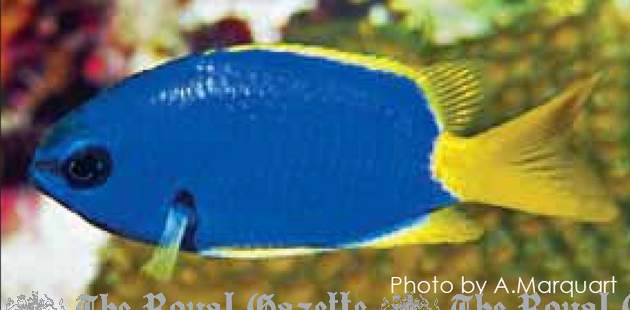Chromis flavicauda is a beautiful and large species from Brazil. Although coloured in a very typical and boring blue body yellow tail configuration, C. flavicauda has a different body shape and a brighter more lustrous colour. Their ability to change the intensity of the blue has led to its common name of “Flashing Chromis”, although it cannot change the colour of its body in a chameleon like manner of Hoplolatilus chlupatyi (Flashing Tilefish).

In 1880, the taxonomic status of Chromis flavicauda was obscure for quite some time. The one and only type specimen from Brazil at that time was used to describe the species, and was previously named Heliastes flavicauda. In 1920, another specimen was collected in Bermuda and was named Chromis bermudae by Nichols. It was noted then that the similarities in description between Heliastes flavicauda and Chromis bermudae warranted a comparison with C. bermudae against the holotype of H. flavicauda. This comparison led Günther to believe that C. bermudae was the same as Heliastes flavicauda, and was regarded as a junior synonym. Together with that specimen and the original holotype, Heliastes flavicauda was re-described (now with two specimens) as Chromis flavicauda, and the bermudan specimen was noted to be just a colour form.
Recently last year in December 2013, Chromis bermudae was separated from C. flavicauda by William Smith-Vaniz and Bruce Collette. The noted colour difference and endemism of C. bermudae warranted a re-look and indeed, was sufficiently different to separate it from C. flavicauda. Over the course of history, the same Bermudan Chromis had been identified and named to species level, relegated down to a junior synonym and now decades later, re-elected to species level once more. Talk about indecisive!
Well now we have a new (well almost new) Chromis species, and an endemic one at that joining the family. Who knows how many previously distinct species have been cast into the shadows of another as a “colour form” just waiting to be re-described. For more information, the research paper is available at the Natural History Museum Library at the Bermuda Aquarium Museum and Zoo.



